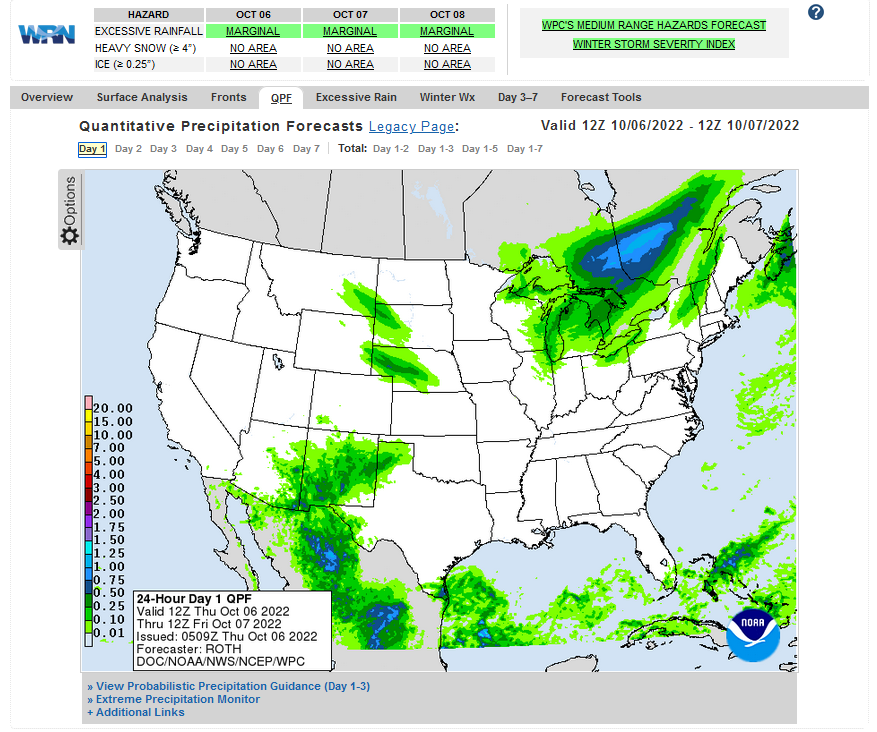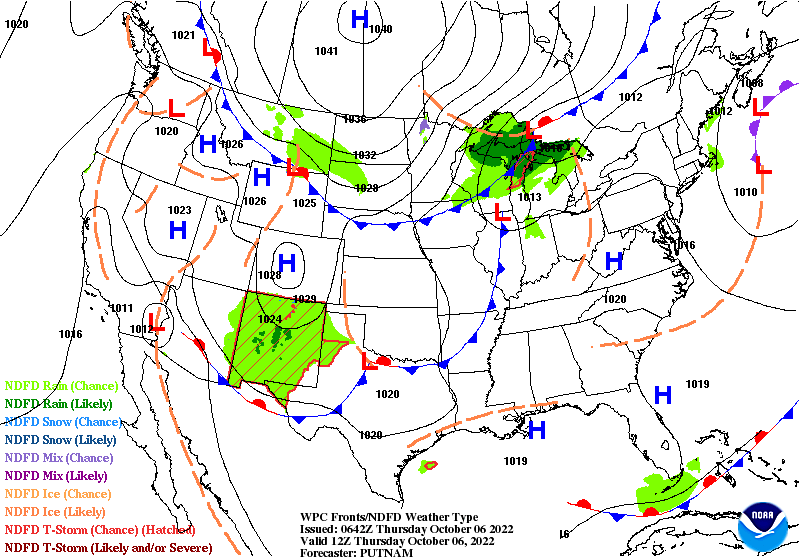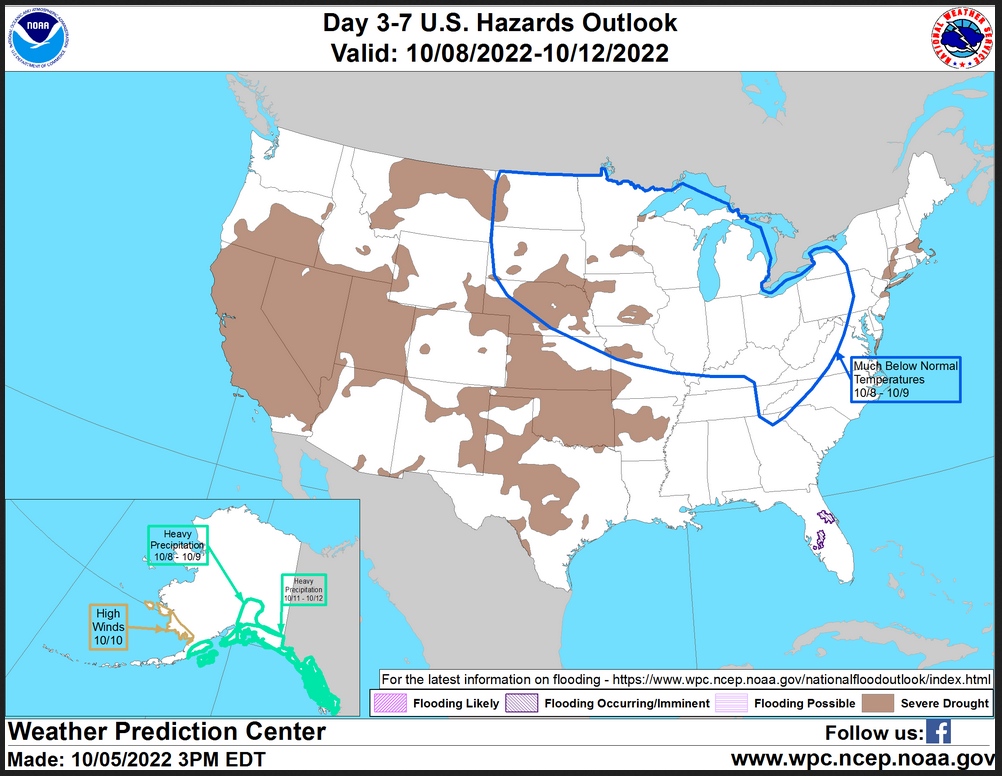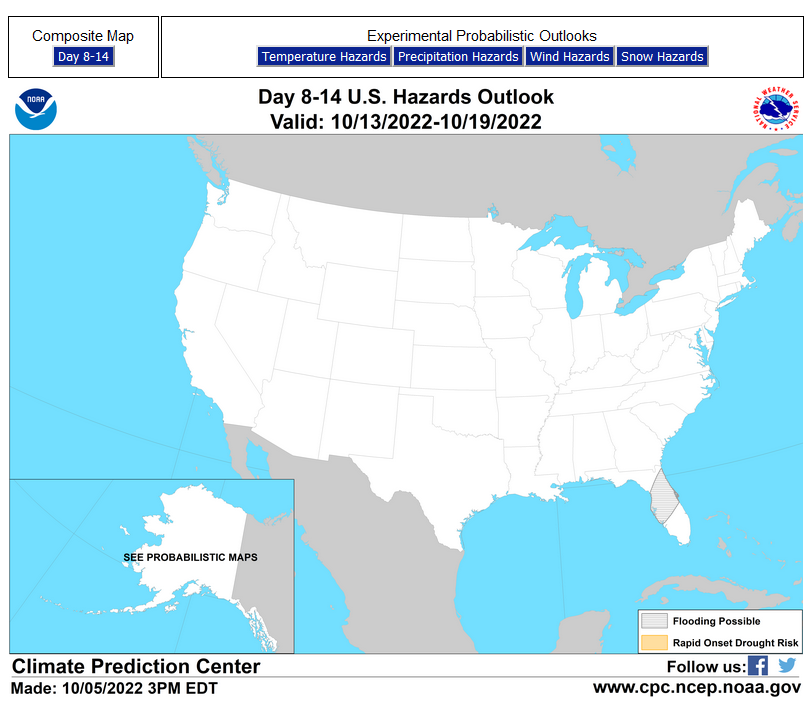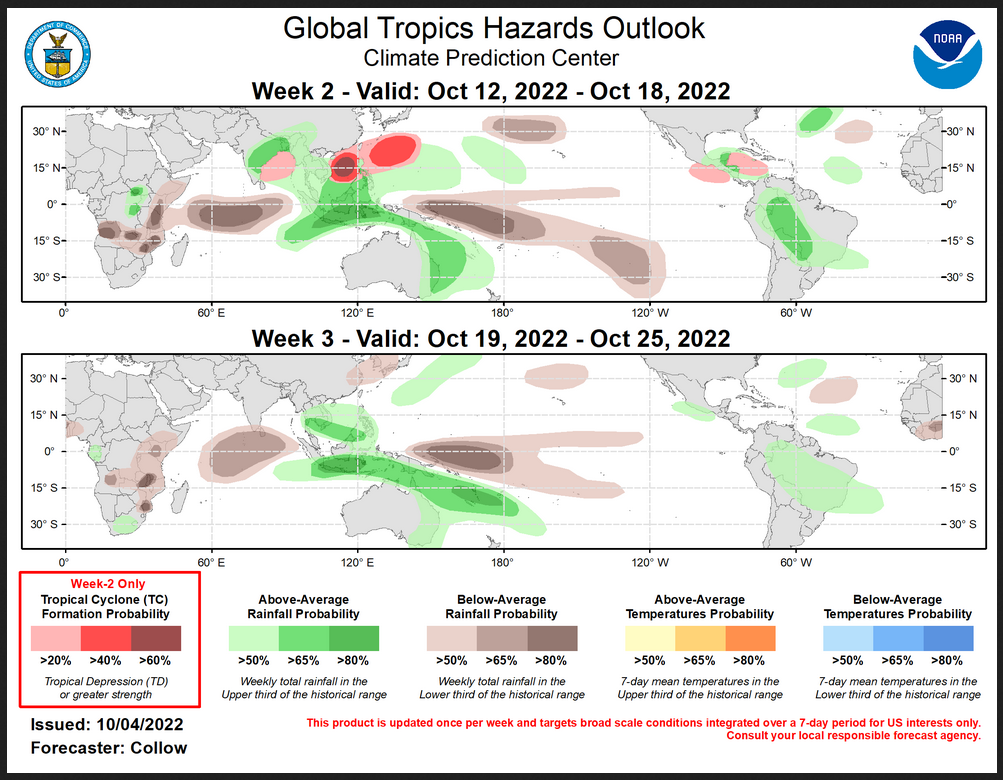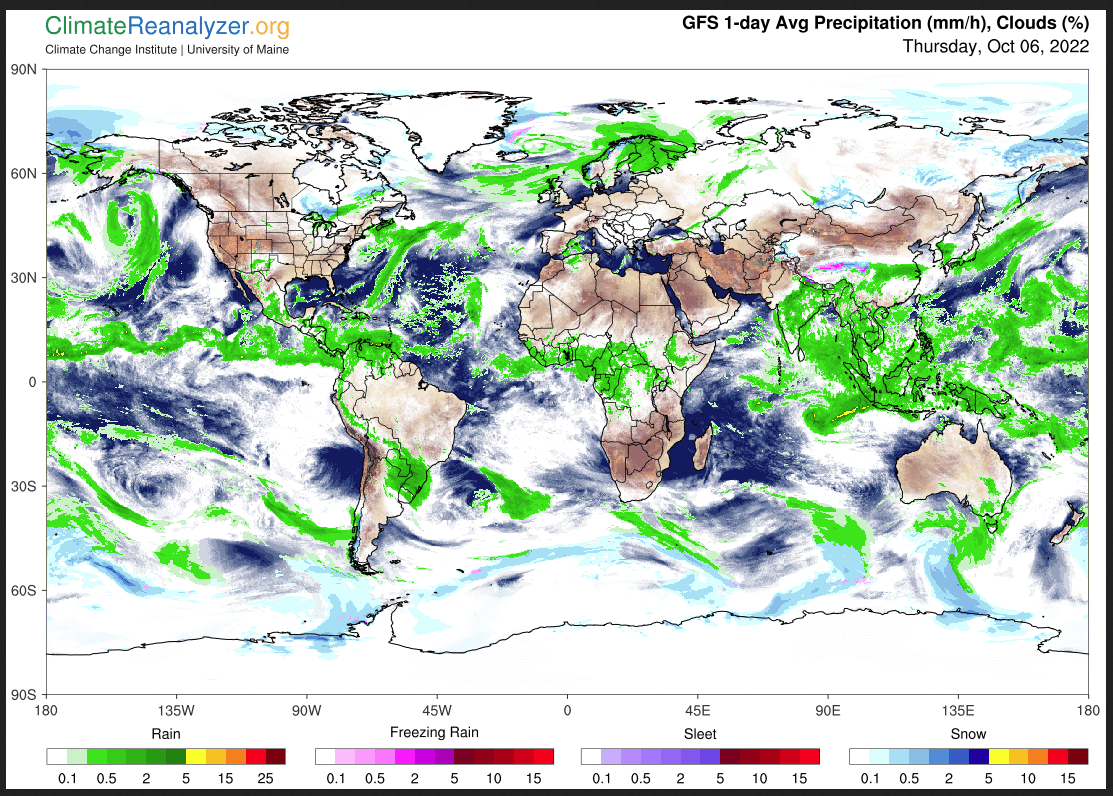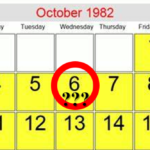Here is what we are paying attention to this evening and the next 48 hours from this afternoon’s NWS Forecast.
...Conditions finally improving across the Northeast as pesky upper-level low moves further offshore... ...Plunging temperatures in the Northern Plains and Upper Mississippi Valley as a potent cold front begins pushing southward late Wednesday... ...Daily showers and thunderstorms continue for the Southern Rockies and High Plains, with isolated instances of flash flooding possible... ...Pleasant weather across much of the West through the end of the week...
Continuation of the NWS Short Range Forecast (It is updated twice a day and these updates can be found here.
Conditions in the Mid-Atlantic and southern New England have begun to improve as the pesky upper-level low that has produced heavy rainfall, strong winds, coastal flooding, and well-below average temperatures over the last several days slowly pushes further offshore into the Atlantic. While the potential for rain still exists in coastal sections of southern New England, with an additional 0.25-0.50" possible through the evening, clouds should begin to break from west to east, with many in the Northeast seeing their first peeks of sunlight since last week. Temperatures are forecast to rebound closer to average on Thursday as clouds continue to clear ahead of high pressure sliding eastward, with highs tomorrow reaching the low to mid-70s across the Northeast and Mid-Atlantic. Further south, after a chilly start to the day with temperatures dipping into the mid-40s across the Tennessee Valley and Mid-South, upper 70s to low 80s can be expected for highs in the Carolinas, Southeast, and Florida. Above-average temperatures in the Plains and Midwest on Wednesday will come to an abrupt halt as a potent cold front pushes southward, bringing unseasonably frigid air behind it. Highs in the northern Plains will struggle to get out of the 40s and 50s on Thursday, while areas south of the boundary can expect temperatures to remain closer to average, with highs in the 70s and low 80s in the central Plains. Frigid morning lows will follow Friday morning, with widespread temperatures below freezing across the area, dipping as far as the low to mid-20s for portions of North Dakota, and Minnesota. The boundary will continue its southward progression on Friday, with temperatures plunging from the Great Lakes through the Missouri Valley and Central Plains, where highs are forecast to be 10-20 degrees below normal. Behind the front, lake-effect showers are also in the forecast for the Upper Great Lakes as a result of the cold, northwest flow across the warmer lake water. Some wet snow may mix in for higher elevations of Wisconsin and the Upper Peninsula of Michigan Thursday night, though little accumulation is expected. Temperatures in the West will continue to be above average through Friday, with highs in the upper 70s and low 80s for the Pacific Northwest and Great Basin, lower 90s for the central California Valleys, low to mid-70s along the California coast, and mid-90s to near 100 for the Desert Southwest. Moreover, conditions will remain dry during this span, resulting in overall pleasant conditions through the end of the week. Further south, a frontal system slowly sagging southward across Arizona and New Mexico will lead to the potential for heavy rainfall in the region over the next several days. Anomalously high moisture that remains pooled across the area will enhance the risk for storms to produce bouts of heavier rainfall, and isolated instances of flash flooding are possible, particularly for terrain-sensitive areas and across burn scars. As a result, a Marginal Risk of Excessive Rainfall has been issued for much of Arizona and New Mexico through Friday.
Current forecast of heavy precipitation (Updates can be found HERE)
Maps that relate the forecast to geography can be found by clicking Here for Day 1 and Here for Day 2.
Here is a 60-hour animated forecast map that shows how the short-term forecast is expected to play out
If it needs to be updated click here.
HAZARDS OUTLOOKS
Click here for the latest complete Day 3 -7 Hazards forecast which updates only on weekdays. Once a week probably Monday or Tuesday I will update the images. I provided the link for readers to get daily updates on weekdays. Use your own judgment to decide if you need to update these images.
Worldwide Tropical Forecast
(This graphic updates on Tuesdays) If it has not been updated, you can get the update by clicking here This is a new approach and covers weeks 2 and 3 not weeks 1 and 2. It has more information but I am having trouble getting used to it. As usual, it comes with a discussion which is below
Detailed Maps and Reports for the Western Atlantic and the Pacific Oceans
Below are three maps that summarize the situation for the Atlantic, Eastern and Central Pacific. Additional information can be accessed by clicking H ERE
First the Atlantic
Click to view the forecast map and have access to additional information https://www.nhc .noaa.gov/gtwo.php?basin= atlc&fdays=5
Then Eastern Pacific
Click to view the forecast map and have access to additional information https://www.nhc.noaa.gov/gtwo.php?basin=epac&fdays=5
Then Central Pacific
Click to view the forecast map and have access to additional information https://www.nhc.noaa.gov/gtwo.php?basin=cpac&fdays=5
And the Western Pacific
Click to view the forecast map and have access to additional information https://www.metoc.navy.mil/jtwc/jtwc.html
Some Intermediate-Term Outlooks
Links to “Outlook” maps and discussions for three time periods. Days 6 – 10, Days 8 – 14, and Weeks 3 and 4. An outlook differs from a forecast based on how NOAA uses these terms in that an “outlook” presents information from deviation from normal and the likelihood of these deviations.
You have to click on the links because they do not update automatically and I do not want to have stale images in the article. But it is not difficult to click on a link and you get a large image plus a discussion. On Fridays in a separate article, we will show the images and provide a link in this article that article. But remember what you will see is the images as of Friday. But here you can get the current images simply by clicking on them. Then hit the return arrow at the upper left of your screen to return to the article. You will not find this information easily anywhere else.
Right now you can find these maps here (We show them every Friday there but you can click above and find them).
Worldwide Weather
Below is the current or short-term precipitation forecast which can be updated by clicking HE RE Additional maps can be obtained HERE.
Month to Date Information
Month to date Temperature can be found at https://hprcc.unl.edu/products/maps/acis/MonthTDeptUS.png
Month to date Precipitation can be found at https://hprcc.unl.edu/products/maps/acis/MonthPNormUS.png

